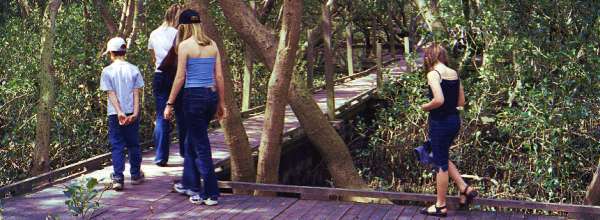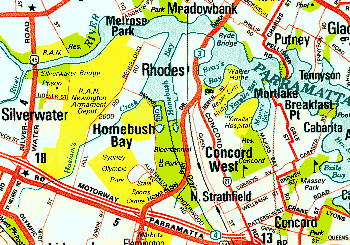
|
Homebush Bay.
A Microscopical Investigation. |
Page 1 of 1 |

|
Homebush Bay.
A Microscopical Investigation. |
Page 1 of 1 |

 The two specimens pictured on this page, a loricate ciliate protozoan and a small isopod crustacean, were collected at Homebush Bay, Sydney, at locations accessible from the boardwalks which give members of the public access to the mudflats and mangrove swamps which characterize the area.
The two specimens pictured on this page, a loricate ciliate protozoan and a small isopod crustacean, were collected at Homebush Bay, Sydney, at locations accessible from the boardwalks which give members of the public access to the mudflats and mangrove swamps which characterize the area.
The ciliate turns out to be Folliculina spp., and was identified in a recent (22/01/2003) email from Wim van Egmond, a Netherlands-based microscopist who responded constructively to Micrographia's request for help in naming these creatures. Thanks Wim. Folliculina inhabits a vase-like lorica, which in this species has an inclined neck with a pronounced spiral groove running from its slightly flanged opening. In appearance, its nearest freshwater relatives are Cothurnia, Vaginicola, Thuricola and similar peritrichs living in transparent tubular loricas, but these are a good deal (about x10) smaller. The body ciliature follows lengthwise parallel kineties having a blue-green pigmentation as seen by transmitted light, similar to some species of the freshwater ciliate Stentor, a creature of similar size, but without a lorica. An unusual feature of this pigmentation is that it is a pronounced red under darkfield illumination. When fully extended, it displays two ribbon-like "tentacles", with thickened edges bearing cirri along their entire length. The exterior surface of the ribbon has the body ciliature described above. The cytoplasm was densely filled with food vacuoles. No contractile vacuole was seen in any individual, but this is the case with marine ciliates in general. Some species of Folliculina are found in fresh water -- presumably these have a contractile vacuole. After a day or two in a shallow dish, these specimens abandoned their loricas, assumed a cylindrical shape resembling a very dark (almost black) turbellarian worm, and swam smoothly in the surrounding water. Here is a link to Wim van Egmond's This small crustacean was found amongst the algae fringing the shallow open waters of Homebush Bay, close to the marshy shores. It is an isopod crustacean, probably of the genus Cymodoce -- commonly called marine pill bugs from their habit of rolling into a ball when disturbed. They were quite numerous, scuttling rapidly about the surface of the predominant alga of the area, which resembled chopped lettuce. The specimen in the photograph was one of the smaller individuals, about a millimetre long. Here is a link to
|